Empire State Native Pollinator Survey
Project Sponsor: New York State Department of Environmental Conservation - Division of Fish and Wildlife
End Date: June 30, 2022
Summary
This project was a four-year field effort to determine the current distribution and conservation status of selected pollinators. Our zoologists conducted surveys statewide following a study design and sampling protocol for each target group identified by an Advisory Committee of experts convened during the planning phase of the project (see Pollinator Study, August 2016 - September 2017). The statewide survey had a citizen science component that involved training volunteers who used iNaturalist to record locations and photographs of pollinators observed around the state.
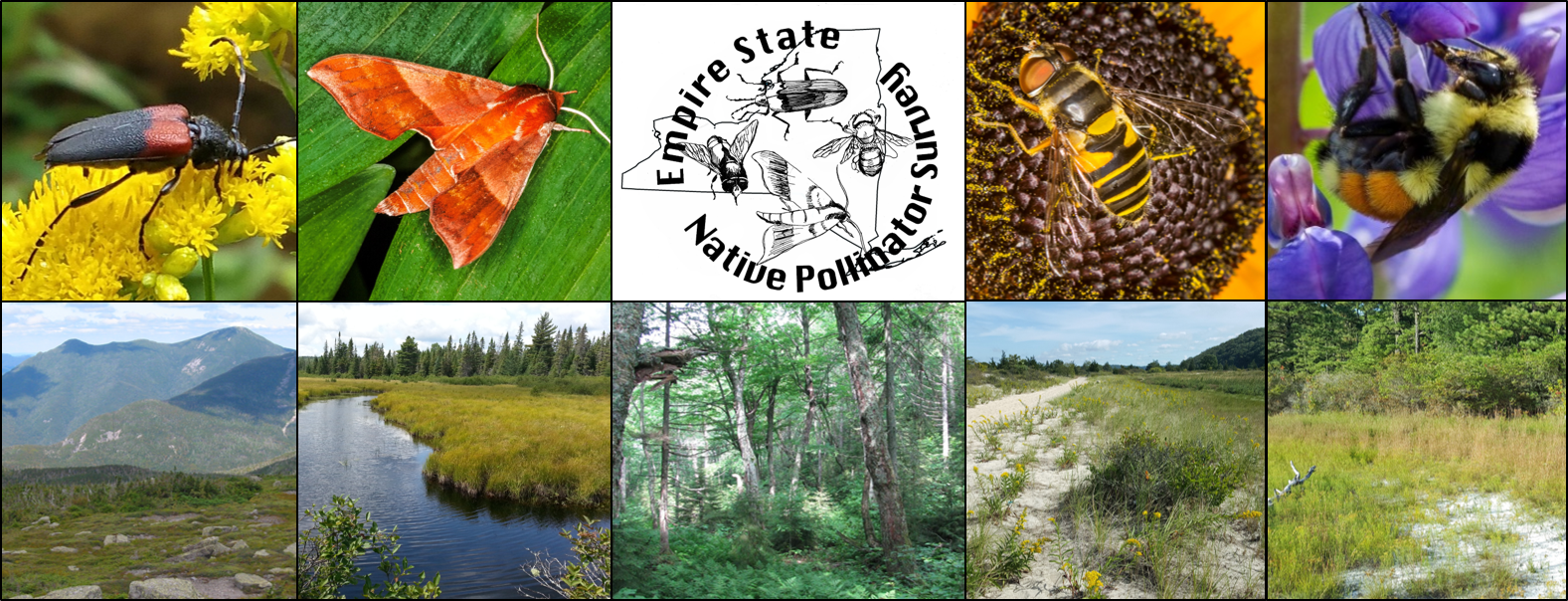
Photo Credits: (top, left to right: Red-shouldered Pine Borer (Stictoleptura canadensis, Matthew D. Schlesinger), Azalea Sphinx Moth (Darapsa choerilus, Stephen Diehl and Vici Zaremba), Logo Artist: Anna Droege, Transverse flower fly (Eristalis transversa, Stephen Diehl and Vici Zaremba), Tri-colored Bumble Bee (Bombus ternarius, Larry Master); bottom, left to right: Alpine Meadow, Mount Skylight (Tim Howard), Open Peatland, Bloomingdale Bog (Matthew Schlesinger), Late-Successional Forest, Windfall Mountain (Tim Howard), Dunes, Sunken Meadow State Park (Andrea Chaloux), Barrens, Brookhaven State Park (Andrea Chaloux).
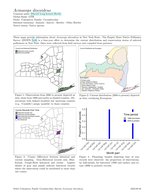
Appendix A: Species Accounts, Distribution Maps, Phenology Charts (PDF, 368.9 MB)
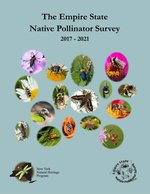
The Empire State Native Pollinator Survey (2017-2021) (PDF, 19.6 MB)
Our project report was completed June 30, 2022:
White, E.L., M. D. Schlesinger, and T.G. Howard. 2022. The Empire State Native Pollinator Survey (2017-2021). New York Natural Heritage Program, Albany, NY. (PDF, 19.6 MB)
Appendix A: Species Accounts, Distribution Maps, Phenology Charts (PDF, 368.9 MB)
Project Need and Background
Native pollinators play an essential role in the pollination of flowering plants, including native plants and wildflowers, garden plants, as well as cultivated crops. Some native pollinator species have suffered population declines over the last few decades. The Federal Pollinator Task Force was established by President Obama in 2014, leading to two national strategies on pollinator management and research. In New York, several species of bumble bees (Bombus spp.) were designated as High-priority Species of Greatest Conservation Need in the revised State Wildlife Action Plan. Also in 2015, New York Governor Andrew Cuomo assembled a Pollinator Task Force to recommend management practices, education, and research and monitoring strategies aimed at conserving wild and managed pollinator populations in New York. The resulting New York State Pollinator Protection Plan (PDF, 870 KB) included the following action item under Research:
“DEC…will begin a multi-year evaluation of New York’s myriad native pollinator species. This assessment will show the current state and distribution of native pollinators and serve as the foundation for developing and implementing future conservation practices.”
In the fall of 2016, Zoologists Matt Schlesinger, Erin White, and Jeff Corser, began work under a Memorandum of Understanding with the NYS DEC to design the native pollinator study described above. They worked with a team of advisors and taxonomic experts to design the study, consisting of scientists and managers from the federal government, state government, academia, and non-profits. The Advisory Committee included Dr. Bryan Danforth (Cornell University), Sam Droege, Patuxent Wildlife Research Center (USGS), Dr. Melissa Fierke (SUNY College of Environmental Science and Forestry), Dr. Carmen Greenwood (SUNY Cobleskill), Rich Hatfield and Katie Hietala-Henschell (Xerces Society for Invertebrate Conservation), Dr. Tim Howard (NY Natural Heritage Program), Dr. Jonathan Mawdsley (Association of Fish and Wildlife Agencies), Dr. Tim McCabe (NYS Museum), Kent McFarland (Vermont Center for Ecostudies), Robyn Niver (US Fish and Wildlife Service), Kathy O’Brien (NYS DEC), and Dr. Jerry Rozen (American Museum of Natural History, retired).
Project Development
Project Goal
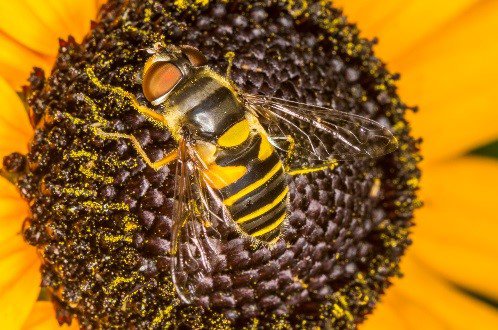
Transverse flower fly (Eristalis transversa) by Stephen Diehl and Vici Zaremba.
The goal of the Empire State Native Pollinator Survey was to determine the conservation status of a wide array of native insect pollinators in nonagricultural habitats.
Conservation status is typically determined from data on a species’ rarity, trends, and threats. For the Natural Heritage network overseen by NatureServe, this is the S-rank for states and G-rank for the global population. Determining this status ideally entails collecting current distributional data from recent field observations and new field surveys (rarity), historical distributional data from museums and other sources (trend), and reviews of literature and discussions with experts (threats). Status can be determined with a subset of this information when, for instance, information on historical distribution is unavailable.
Native insect pollinators are species native to the northeastern United States. This is specified mainly to distinguish the targets of this survey from Apis mellifera, the European honey bee, a managed pollinator that is the focus of many other conservation and management efforts.
Study Design
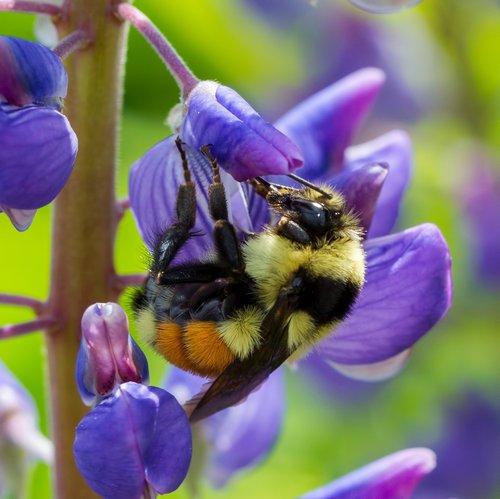
Tri-colored Bumble Bee (Bombus ternarius) by Larry Master.
The status of native pollinators was assessed with three field sampling strategies and compilation of museum collection data. Combined with literature review and expert opinion, these data collection methods enabled the determination of conservation status. An Extensive Survey throughout New York State helped determine the distribution of species within entire groups (i.e., families, subfamilies, certain genera) of pollinators in the state, such as leafcutter bees, hoverflies, and flower longhorn beetles. The goal of the Extensive Survey was to provide data on the distribution of individual species of pollinators within broad taxonomic or functional groups whose conservation status is poorly known.
Target Habitat Surveys were supplements to the Extensive Survey that assessed the focal taxa associated with rare habitat types not likely to be well sampled by the “broad-brush” Extensive Survey approach, but expected to support rare or at-risk species, using the same field methodology and targeting the same focal taxa. These habitats included alpine, barrens, coastal dunes, peatlands, and late-successional forests.
Target Species Surveys helped determine the distribution of select pollinator species or species groups that required either geographical focus, specific sampling methodologies, or resurveys of historical records, such as oil bees and certain at-risk flower flies and bumble bees.
Compilation of museum collection data occurred throughout the life of the project and brought together information on specimens collected in New York for the focal taxa in order to inform species’ distributions and phenology and determine trends when possible.
Our Participant Handbook (PDF, 2.5 MB) outlines our work plan, ways to contribute to the study, and resources for participants. For details on the sampling design and methods for each survey type, please see the complete Survey Study Plan (PDF, 2.4 MB) developed in spring of 2017. Keep in mind, we wrote this with Advisor input as our "dream study". We performed a significant portion of the work outlined in the study plan and completed this survey work from 2017-2020 with the help of staff, students, partners, and citizen scientists.
Focal Taxa
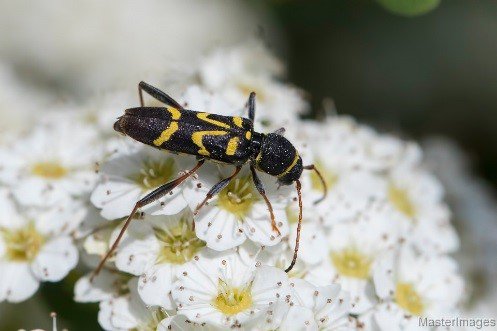
A flower longhorned beetle (Clytus ruricola) by Larry Master.
Determining the conservation status of all native pollinators in one four-year project would be an untenable goal. We therefore developed a set of “focal taxa”—species or groups of species on which to concentrate our efforts. To highlight the important role a variety of native insects play in pollination, we wished to include at least one species group from each of the primary insect orders known to pollinate native plants: Hymenoptera (bees, ants, and wasps), Diptera (flies), Coleoptera (beetles), and Lepidoptera (butterflies and moths). Within these orders, we selected groups of species that 1) have been documented or are suspected to be important pollinators; 2) have poorly understood conservation status (although some knowledge of regional or global status is helpful for context, and see #3); 3) contain known or suspected at-risk species in the Northeast or elsewhere, including those that are naturally rare and those whose populations have declined or distributions have decreased; 4) are not so diverse that determining the conservation status of most of the species may be an unreachable goal; 5) may feasibly be identified to species by trained biologists, experts who may be project partners, and/or citizen scientists; and 6) may be appealing for a citizen-science effort. In addition, we identified individual species of known or suspected conservation concern for targeted surveys. Sometimes these focal species were also members of species groups selected as focal taxa, but for whom the Extensive Survey would not likely provide sufficient information. Final selection of focal taxa relied on literature review, conversations with taxonomic experts, and the input of our advisory committee.
Focal Taxa
Hymenoptera
- Bumble bees and long-horned bees, Family Apidae: Bombus, Melissodes
- Mining bees, Family Andrenidae: Andrena, Calliopsis
- Leafcutter bees, Family Megachilidae: Megachile, Osmia
- Oil bees, Macropis, Melitta
- A cuckoo bee, Epeoloides pilosula
Diptera
- Bee flies, Family Bombyliidae: Bombylius
- Saproxylic (decaying wood) hover flies, Family Syrphidae: ~80 species in two subfamilies
Coleoptera
- Flower longhorn beetles, Family Cerambycidae: Lepturinae
- Hairy flower scarabs, Family Scarabeidae: Trichiotinus
Lepidoptera
- Hawk (sphinx) moths, Family Sphingidae: 26 species that feed as adults
- Flower moths, Family Noctuidae: Schinia
Dec. 10, 2020 | Updated Feb. 7, 2024, 12:56 p.m.